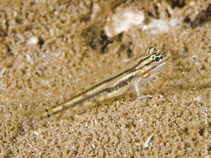http://www.fishbase.org/Summary/speciesSummary.php?genusname=Coryphopterus&speciesname=glaucofraenum ---> http://fishbase.de/Summary/speciesSummary.php?genusname=Coryphopterus&speciesname=glaucofraenum
http://fishbase.de/Summary/speciesSummary.php?genusname=Coryphopterus&speciesname=glaucofraenum ---> https://fishbase.de/Summary/speciesSummary.php?genusname=Coryphopterus&speciesname=glaucofraenum
https://fishbase.de/Summary/speciesSummary.php?genusname=Coryphopterus&speciesname=glaucofraenum ---> http://fishbase.de/summary/Coryphopterus-glaucofraenum.html
http://fishbase.de/summary/Coryphopterus-glaucofraenum.html ---> https://fishbase.de/summary/Coryphopterus-glaucofraenum.html
Coryphopterus glaucofraenum, Bridled goby : aquarium

You can
sponsor
this page
Common name (e.g. trout)
Genus + Species (e.g. Gadus morhua)
-

-
About this page
-
Languages
-
User feedbacks
-
Citation
-
Uploads
-
Related species
-


 Bridled goby
Add your observation in
Fish Watcher
Upload your
photos
and
videos
Bridled goby
Add your observation in
Fish Watcher
Upload your
photos
and
videos
Pictures
|
Videos |
Google image
 Coryphopterus glaucofraenum
Coryphopterus glaucofraenum
Picture by
Bertoncini, A.A.
Teleostei (teleosts) >
Gobiiformes
(Gobies) >
Gobiidae
(Gobies) > Gobiinae
Etymology:
Coryphopterus:
Greek, koryphe = summit + Greek, pteron = fin, wing (Ref.
45335
)
.
More on author:
Gill
.
Environment: milieu / climate zone / depth range / distribution range
Ecology
Marine; reef-associated; depth range 2 - 45 m (Ref.
9710
). Tropical; 37°N - 33°S
Western Atlantic: North Carolina, USA and Bermuda to Santa Catarina, Brazil (Ref.
57756
); throughout the Caribbean Sea.
Size / Weight / Age
Maturity: L
m
?
range ? - ? cm
Max length : 8.0 cm TL male/unsexed; (Ref.
9710
)
Dorsal
spines
(total): 6;
Dorsal
soft rays
(total): 10;
Anal
spines
: 1;
Anal
soft rays
: 10;
Vertebrae
: 26. With black spot on side of head above gill cover (Ref.
26938
). Individuals from white sand bottom and clear water are pale with two rows of faint yellow spots on side of body; a horizontal orange streak extending posteriorly from middle of eye to above pectoral fin; a row of dusky spots at base of dorsal fins. Individuals from darker bottom and more turbid water are more darkly pigmented; there are 2 rows of dark spots on side of body and one mid-dorsally, fins dusky (Ref.
13442
).
Inhabits clear white sandy areas near deep reefs and grassy and rocky areas. Burrows in the sand and the male guards the eggs (Ref.
5521
). The Bridled goby, which has X-shaped marks and spots, occurs in both clear and more murky inshore waters, while the paler, very similar Sand goby,
Coryphopterus tortugae
[=
Coryphopterus glaucofraenum
], occurs over white sand (Ref.
26938
).
Life cycle and mating behavior
Maturity
|
Reproduction
|
Spawning
|
Eggs
|
Fecundity
|
Larvae
Oviparous, demersal spawner (Ref.
101194
). Both male and female spawn with many individuals in small contiguous territories (Ref.
240
).
Robins, C.R. and G.C. Ray
, 1986. A field guide to Atlantic coast fishes of North America. Houghton Mifflin Company, Boston, U.S.A. 354 p. (Ref.
7251
)
IUCN Red List Status (Ref.
130435
)
Least Concern (LC)
; Date assessed:
01 March 2010
CITES
Not Evaluated
Not Evaluated
Threat to humans
Harmless
Human uses
Aquarium: commercial
FAO - Publication:
search
|
FishSource
|
More information
Countries
FAO areas
Ecosystems
Occurrences
Introductions
Stocks
Ecology
Diet
Food items
Food consumption
Ration
Common names
Synonyms
Metabolism
Predators
Ecotoxicology
Reproduction
Maturity
Spawning
Spawning aggregation
Fecundity
Eggs
Egg development
Age/Size
Growth
Length-weight
Length-length
Length-frequencies
Morphometrics
Morphology
Larvae
Larval dynamics
Recruitment
Abundance
BRUVS
References
Aquaculture
Aquaculture profile
Strains
Genetics
Electrophoreses
Heritability
Diseases
Processing
Nutrients
Mass conversion
Collaborators
Pictures
Stamps, Coins Misc.
Sounds
Ciguatera
Speed
Swim. type
Gill area
Otoliths
Brains
Vision
Tools
E-book
|
Field guide
|
Identification keys
|
Length-frequency wizard
|
Life-history tool
|
Point map
|
Classification Tree
|
Catch-MSY
|
Special reports
Check for Aquarium maintenance
|
Check for Species Fact Sheets
|
Check for Aquaculture Fact Sheets
Download XML
Summary page
|
Point data
|
Common names
|
Photos
Internet sources
AFORO (otoliths) |
Aquatic Commons
|
BHL
|
Cloffa
|
BOLDSystems
|
Websites from users
|
Check FishWatcher
|
CISTI
|
Catalog of Fishes
:
genus
,
species
|
DiscoverLife
|
ECOTOX
| FAO - Publication:
search
|
Faunafri
| Fishipedia |
Fishtrace
| GenBank:
genome
,
nucleotide
|
GloBI
|
Google Books
|
Google Scholar
|
Google
| IGFA World Record |
MitoFish
|
National databases
|
Otolith Atlas of Taiwan Fishes
|
PubMed
|
Reef Life Survey
| Socotra Atlas |
Tree of Life
| Wikipedia:
Go
,
Search
| World Records Freshwater Fishing |
Zoobank
|
Zoological Record
Estimates based on models
Preferred temperature (Ref.
123201
): 24.4 - 28, mean 27 °C (based on 254 cells).
Phylogenetic diversity index (Ref.
82804
): PD
50
= 0.5001 [Uniqueness, from 0.5 = low to 2.0 = high].
Bayesian length-weight: a=0.00759 (0.00466 - 0.01235), b=3.04 (2.90 - 3.18), in cm total length, based on LWR estimates for this species & (Sub)family-body (Ref.
93245
).
Trophic level (Ref.
69278
): 2.7 ±0.4 se; based on diet studies.
Resilience (Ref.
120179
): High, minimum population doubling time less than 15 months (Preliminary K or Fecundity.).
Fishing Vulnerability (Ref.
59153
): Low vulnerability (10 of 100).
Nutrients (Ref.
124155
): Calcium = 166 [74, 326] mg/100g; Iron = 0.879 [0.427, 1.743] mg/100g; Protein = 17.7 [15.7, 19.4] %; Omega3 = 0.0941 [, ] g/100g; Selenium = 28.8 [13.0, 66.9] μg/100g; VitaminA = 115 [28, 450] μg/100g; Zinc = 2.44 [1.56, 3.66] mg/100g (wet weight);
Back to Search
Random Species
Back to Top
Accessed through:
Not available
FishBase mirror site :
localhost
Page last modified by :
mrius-barile
- 20 July 2016
Fatal error
: Uncaught ArgumentCountError: Too few arguments to function checkEcotox(), 1 passed in /var/www/html/summary/SpeciesSummary.php on line 2304 and exactly 3 expected in /var/www/html/includes/speciessummary.lib.php:2580 Stack trace: #0 /var/www/html/summary/SpeciesSummary.php(2304): checkEcotox() #1 {main} thrown in
/var/www/html/includes/speciessummary.lib.php
on line
2580
|